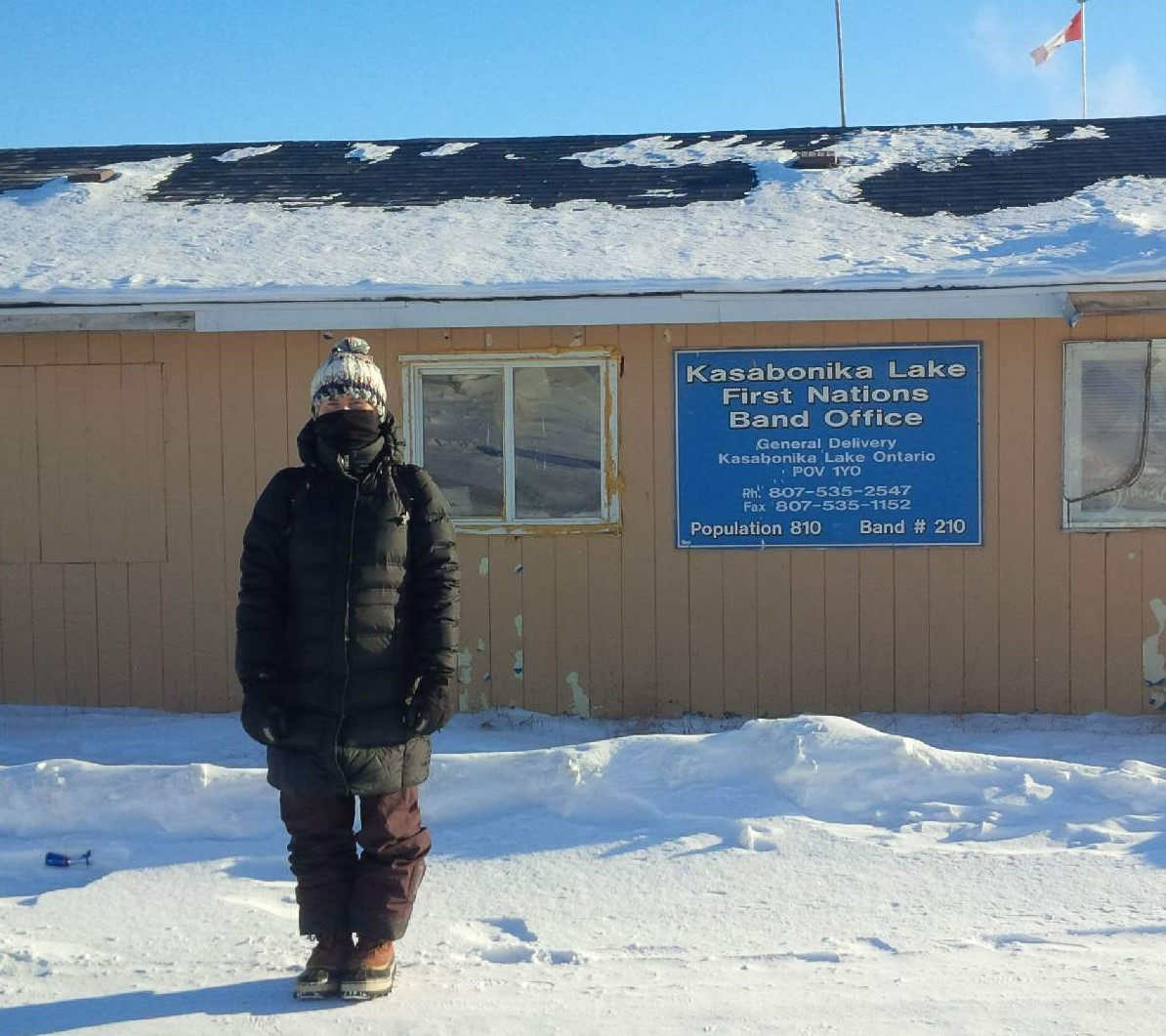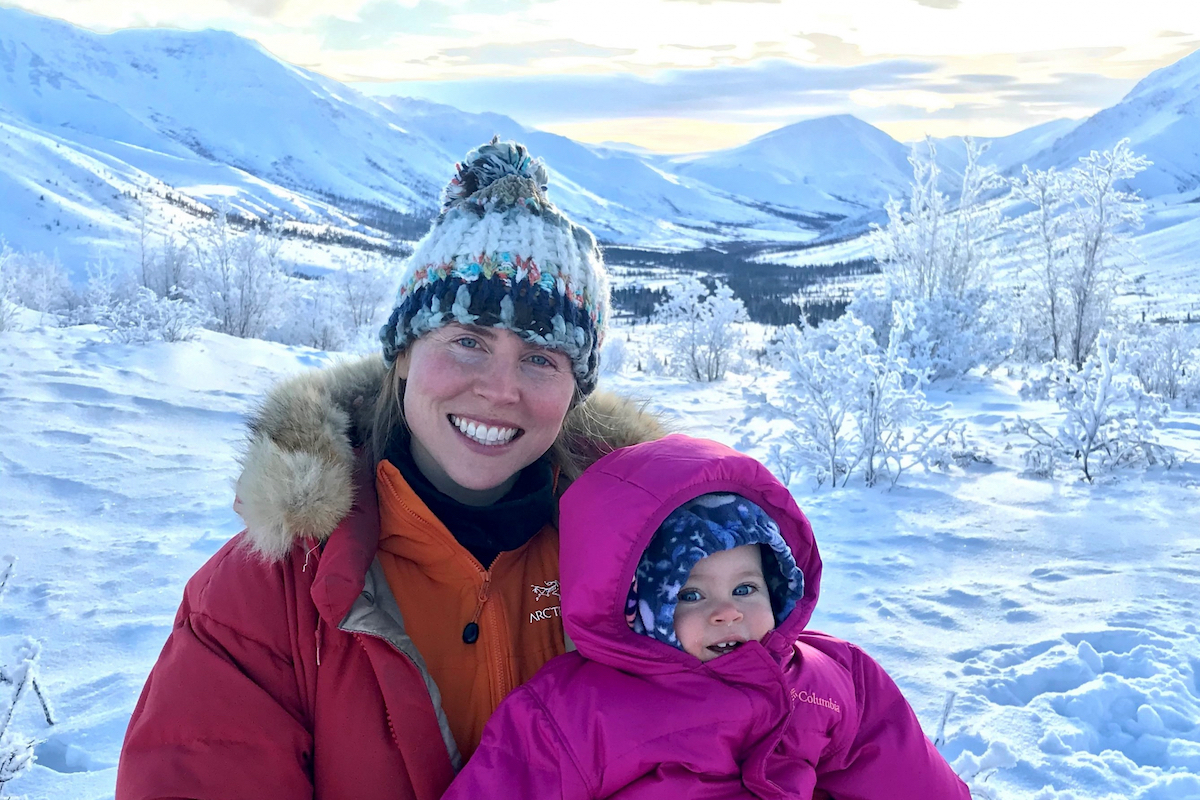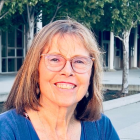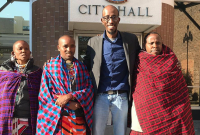Support strong Canadian climate journalism for 2025
As part of a series highlighting the work of young people in addressing the climate crisis, writer Patricia Lane interviews Anishinaabe lawyer, linguist and storyteller Lindsay Borrows.
Author Statement
The 1990s were personally tough for me. I spent the decade immersed in action based on climate catastrophe science, trying, and by all accounts failing, to stem the tide. Hardest of all, death and dementia came to my family.
As my awareness deepened about the growing divide between young and old and rich and poor, grief had become a pretty constant companion. I could choose to go further into the abyss of fear and loss or choose the only thing stronger: love. To choose love is to hope. But I had forgotten how. So I made a resolution — one that could last a year or even a decade if need be. I chose to study hope.
Part of my journey is to seek out promising young people who are contending in evidence-based and impactful ways with the climate crisis and engage them in conversations about hope. I am grateful for Canada’s National Observer’s commitment to solutions journalism, which provides these determined, joyful and, yes, hopeful young people a voice.
Keegitah, the Anishinaabe word for “speaker,” seems an apt choice of name for lawyer, linguist and storyteller Lindsay Borrows. At 32, she has practised law, written a book, introduced hundreds of law students to her people’s world view and legal traditions and is contributing to the revitalization of the Anishinaabe legal system.

Lindsay Borrows, Anishinaabe lawyer, storyteller and scholar
Can you tell us about your current work and why it matters?
My work through the University of Victoria’s Indigenous law research unit is focused on partnering with Indigenous communities interested in revitalizing their own legal traditions. I’m inspired by the love people have for their homelands and waters, and the sophisticated steps they take to ensure future generations will enjoy and benefit from a healthy home. Supporting the work of Indigenous Peoples to make their own decisions over our territories is an essential step in building and maintaining reconciliation.
Tell us about your book.
Otter's Journey through Indigenous Language and Law follows Otter, my dodem, or clan, relation, in her travels from Anishinaabe homelands across Inuit, Māori, Coast Salish and Abenaki territories as they re-emerge from colonial suppression. Through her interactions with people from parallel cultures, Otter teaches us about the ways Indigenous languages and the laws they reveal help form guiding principles for our lives today.
Can you give us an example?
Anishinaabe means “good being.” We can look to our ecosystems to learn how to reach that state. Take the maple tree, for example. It gives sap freely to bring us energy and sweetness in early spring, provides shade in the hot summer, beauty and soil enrichment from its leaves in the fall and firewood in the winter. Yet it asks very little in return.
In the Anishinaabe language, the verb “to teach” is “akinomaage,” which literally means “point towards the earth.” Our laws can be learned by looking to the earth and asking: “What does this show us about how we might act, and what our obligations may be?”
In settler culture, people tend to think of “law” quite differently. There are winners and losers. Police must enforce the law. Canadians are proud of their “bill of rights.” But my elders teach me that law is for the lawless. You don't need laws that punish and constrain when people live good lives.
If we use the maple tree as our model, we realize we actually need a “bill of obligations.” We will be taken care of if we take care of nature. Indigenous legal orders are less about what is owed to me and more about what we owe to each other and our surrounding ecosystems, from which we are inseparable.
Tell us about your childhood and how it impacted the way you move through the world today.
Anishinaabe territory is partially situated around the Great Lakes. My family is from the Saugeen-Bruce Peninsula on Georgian Bay. I moved every two years growing up because of my father's work. In the midst of this constant change, we would spend our summers with family at Neyaashiinigmiing, which nourished me with stability and a deep sense of home. Something important my grandmother taught me is that there are people who will challenge everything you know you are, but you do have the power to stand up and do what is right. A community of support can help us find the courage to be our best selves.
You have been part of running immersive Indigenous law camps for law students. Tell us about that work.
Since 2015, we have hosted law students for four days each September in our community of Neyaashiinigmiing. They aim to teach students about the Anishinaabe legal system that emerges from our world view.
The sessions are outdoors, and we encourage students to approach ecosystems as their teachers, and elders or knowledge-keepers as the lesson interpreters. For many, this is their first and potentially only exposure to Indigenous law. We hope it adds depth to their future work, whether they are representing the claims of extractive industries, representing parties in land disputes or one day judging land disputes, especially when Indigenous people are involved.
A judge who participated in one of our earlier camps went on to hear a court case with important implications for Anishinaabe people. Anishinaabe legal process guided the hearings, and we like to think the law camp helped sensitize her to better understand the arguments.

What advice do you have for young people?
There are so many Anishinaabe stories that tell of the wisdom of celebrating small successes. In our creation story, Muskrat placed a small handful of dirt on Turtle’s back. Turtle Island as we know it today grew from this simple act. Some days will be hard, but we can live each day knowing that small things done over a long time matter.
What do you want to say to older readers?
It means the world to me as a young person that you reach across the generations to support me. So much power comes from that intergenerational confidence. When you as an older person take the time to sit with a young person and really listen and be with them, it is a gift of great value.






Comments